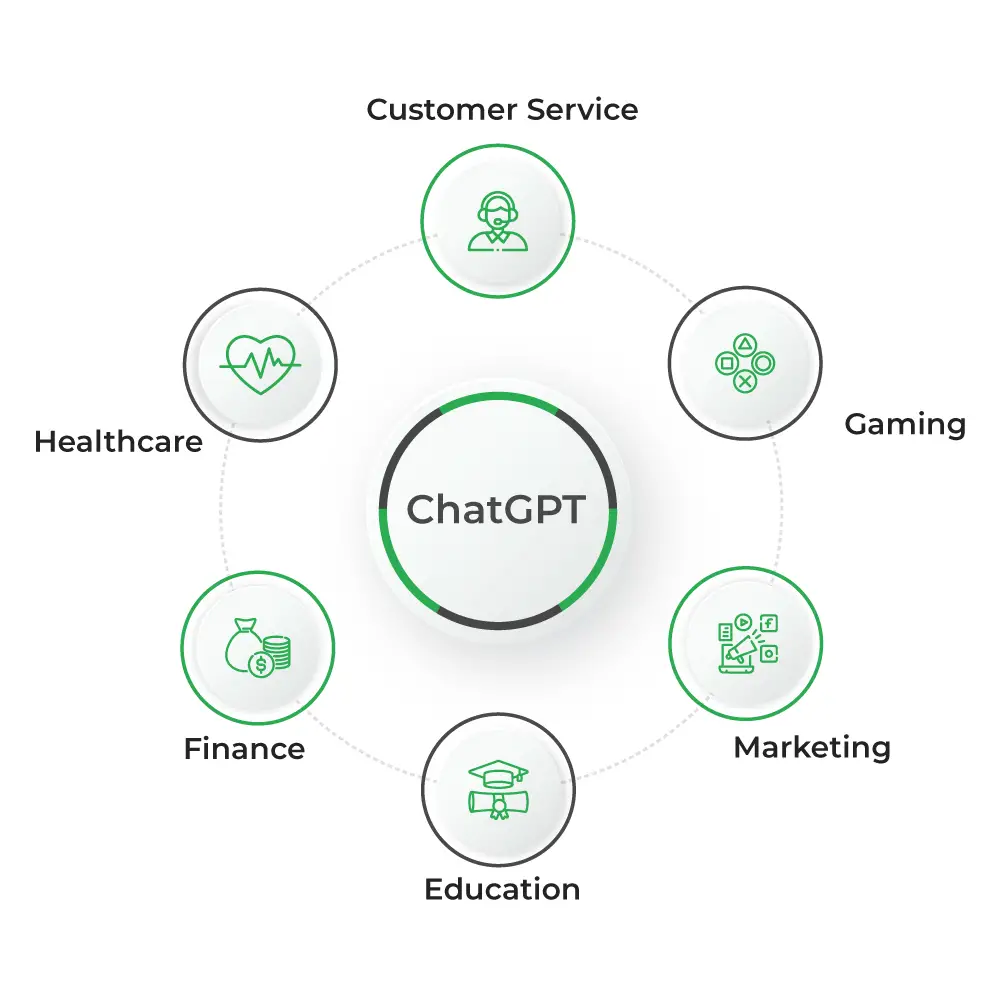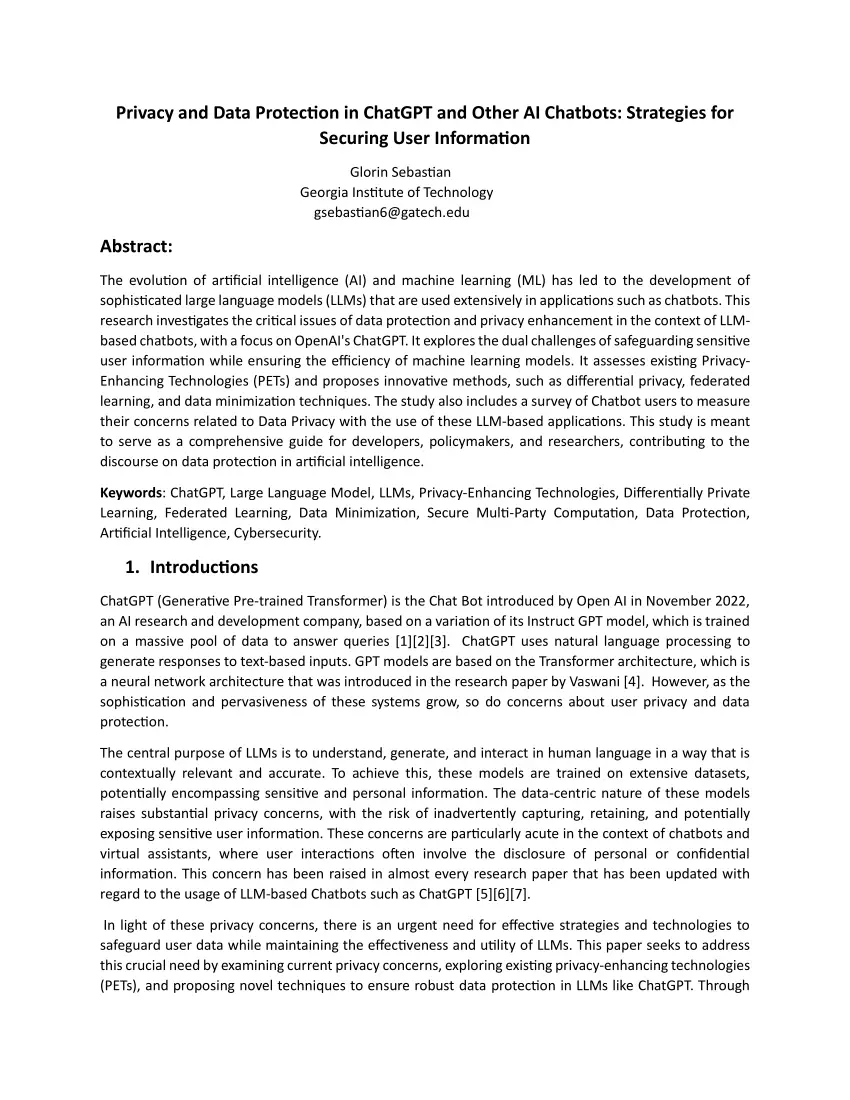Securing ChatGPT Applications: A Guide to Privacy and Data Protection

ChatGPT, a powerful AI-driven language model, has gained immense popularity for its text-generating capabilities. However, using ChatGPT applications raises critical privacy and data protection concerns. This guide provides a comprehensive approach to securing ChatGPT applications, ensuring that sensitive data remains protected.

1. Data Privacy Considerations:
- Secure Data Collection: Limit data collection to what is strictly necessary for the application’s functionality. Obtain clear consent from users before collecting any personal identifiable information (PII).
- Data Retention Policies: Implement policies for data retention and deletion. Define clear criteria for retaining and purging data to prevent unnecessary exposure.
- Data Encryption: Encrypt data during transmission and storage. Use strong encryption algorithms to protect data from unauthorized access.
2. Access Controls:
- Strong Authentication: Implement strong authentication mechanisms such as two-factor authentication or biometric authentication to prevent unauthorized access to user accounts.
- Role-Based Access Control: Define user roles and permissions to limit access to sensitive data based on need-to-know. Monitor user access logs for suspicious activity.
3. Security Vulnerabilities:
- Input Validation: Validate user input to prevent malicious attacks such as SQL injections or cross-site scripting.
- Secure Server Configuration: Configure application servers with security best practices, such as secure TLS protocols, cookie protection, and regular software updates.
- Vulnerability Scanning: Conduct regular vulnerability scans to identify and fix security flaws in the application.
4. Data Protection and Compliance:
- Compliance with Regulations: Adhere to relevant privacy regulations such as GDPR, CCPA, and HIPAA. Ensure that the application is designed and operated in accordance with these regulations.
- Data Protection Officer: Designate a qualified individual as the Data Protection Officer (DPO). The DPO’s responsibilities include monitoring compliance, responding to data breaches, and advising on data protection practices.
- Incident Response Plan: Develop a comprehensive incident response plan to handle data breaches or security incidents. Define roles, responsibilities, and communication protocols to minimize the impact of incidents.
5. Best Practices:
- Use Ethical AI: Ensure that the application is designed and deployed in an ethically sound manner. Avoid using ChatGPT for malicious purposes or violating user privacy.
- Educate End-Users: Provide training and resources to end-users on best practices for using the application securely. Inform them about data privacy concerns and recommend secure usage habits.
- Regular Security Audits: Conduct periodic security audits to identify and address potential vulnerabilities. Engage with external auditors for independent assessments.
By implementing these security measures, organizations can protect user data, prevent unauthorized access, and ensure compliance with privacy regulations when using ChatGPT applications. This comprehensive approach safeguards sensitive information, fosters trust with users, and minimizes the risk of data breaches and security incidents.## Securing ChatGPT Applications: A Guide to Privacy and Data Protection
Executive Summary
ChatGPT has revolutionized the way we interact with technology, offering unprecedented capabilities in language comprehension and generation. However, its widespread adoption raises critical privacy and data protection concerns that organizations must address. This guide provides comprehensive insights into the security challenges posed by ChatGPT applications and outlines best practices for mitigating risks and ensuring data integrity.
Introduction
The explosive popularity of ChatGPT, a large language model developed by OpenAI, has transformed industries ranging from customer service to content creation. However, this technological advancement carries inherent privacy and data protection risks. Organizations leveraging ChatGPT applications must prioritize user data privacy, adherence to regulatory compliance, and prevention of unauthorized access to sensitive information.
FAQs
-
What are the primary privacy concerns associated with ChatGPT applications?
- Unauthorized access to user data
- Leakage of sensitive information
- Bias and discrimination in language generation
-
How can organizations mitigate the risks associated with ChatGPT use?
- Implementing robust data protection measures
- Establishing clear usage policies
- Regularly monitoring and updating ChatGPT applications
-
What regulatory frameworks govern data protection and privacy in the context of ChatGPT use?
- General Data Protection Regulation (GDPR)
- Health Insurance Portability and Accountability Act (HIPAA)
- California Consumer Privacy Act (CCPA)
Top 5 Subtopics
1. Data Privacy
Description: Ensuring the confidentiality and integrity of user data exchanged with ChatGPT applications.
Key Considerations:
- Data encryption: Protecting data at rest and in transit to prevent unauthorized access
- Data minimization: Limiting the collection and storage of personal data
- Transparency and informed consent: Providing users with clear disclosures about data processing and obtaining their consent
- Data breach response: Establishing comprehensive plans for responding to security incidents and data breaches
2. Regulatory Compliance
Description: Aligning ChatGPT applications with applicable data protection and privacy regulations.
Key Considerations:
- GDPR compliance: Implementing measures to ensure compliance with the GDPR’s stringent data protection requirements
- HIPAA compliance: Meeting the healthcare industry’s specific data privacy mandates for health-related information
- CCPA compliance: Adhering to the CCPA’s requirements for data protection and user rights for California residents
3. Security Controls
Description: Implementing technical and organizational measures to safeguard ChatGPT applications against unauthorized access and data breaches.
Key Considerations:
- Authentication and authorization: Establishing strong mechanisms for user authentication and access control
- Access management: Controlling who has access to ChatGPT applications and sensitive data
- System hardening: Strengthening operating systems and applications to prevent vulnerabilities from being exploited
- Regular security audits: Conducting regular security assessments to identify vulnerabilities and recommend remediation actions
4. Bias and Discrimination Mitigation
Description: Addressing biases and discrimination in ChatGPT’s language generation capabilities.
Key Considerations:
- Data diversity: Ensuring that ChatGPT is trained on diverse datasets to reduce bias
- Bias testing and mitigation: Conducting thorough testing to identify and address biases in language generation
- Ethical guidelines: Establishing ethical guidelines for ChatGPT use and preventing its use for discriminatory purposes
- Human review: Implementing processes for human review of ChatGPT-generated content to ensure fairness and accuracy
5. Data Protection by Design
Description: Incorporating privacy and data protection into the design and development of ChatGPT applications from the outset.
Key Considerations:
- Privacy impact assessments: Conducting comprehensive assessments to identify privacy risks and develop appropriate safeguards
- Default privacy settings: Setting data protection controls as default to protect user data
- Regular security updates: Continuously updating ChatGPT applications to address emerging threats and vulnerabilities
- User data control: Empowering users with options to control their data and manage their privacy preferences
Conclusion
Securing ChatGPT applications requires a comprehensive approach that encompasses data privacy, regulatory compliance, security controls, bias mitigation, and data protection by design. By implementing these best practices, organizations can harness the transformative power of ChatGPT while upholding user trust and safeguarding data integrity.
Keywords
- ChatGPT
- Privacy
- Data protection
- Regulatory compliance
- Security controls

